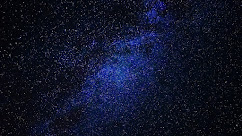Did you ever think about "How were formed stars and constellations in the universe" ?
Today We'll Read About another Knowledge of Universe
"How were formed stars and constellations in the universe" ?
Stars and constellations have been fascinating humans for centuries. From ancient mythology to modern-day astronomy, the study of stars and constellations has been an important aspect of human curiosity. But how were stars and constellations formed in the universe? In this article, we will explore the fascinating process of star formation and how constellations were created.
Stars are formed from the collapse of clouds of gas and dust in space. These clouds are called nebulae, and they contain hydrogen, helium, and other elements. When these clouds become dense enough, gravity starts to take over, and the cloud collapses inward. As the cloud collapses, it starts to spin faster, and this creates a disk-like structure called a protostellar disk.
Inside the protostellar disk, the temperature and pressure increase, and nuclear fusion begins. Nuclear fusion is the process by which atomic nuclei come together to form heavier elements, releasing a tremendous amount of energy in the process. This is what makes stars shine.
The size of the star that is formed depends on the size of the protostellar disk. If the disk is large enough, it can form a massive star, which can be tens or even hundreds of times larger than our sun. If the disk is smaller, it can form a smaller star, like our sun.
Once a star is formed, it begins to emit light and heat. This light and heat cause the surrounding gas and dust to glow, creating a nebula around the star. Over time, the star will consume the gas and dust in its immediate vicinity, and the nebula will dissipate.
Now that we understand
How stars are formed, let's talk about how constellations were created. Constellations are patterns of stars in the sky that have been given names and meanings by various cultures throughout history. They were used for navigation, storytelling, and even religious purposes.
The constellations we see today were first identified by the ancient Greeks, who assigned names and meanings to groups of stars they saw in the sky. These names and meanings were passed down through the generations and are still used today.
However, the stars that make up these constellations are not actually related to each other. They just happen to appear close together in the sky as seen from Earth. For example, the stars in the Big Dipper, one of the most recognizable constellations, are not actually physically connected to each other.
In conclusion, stars and constellations are some of the most fascinating objects in the universe. Stars are formed from the collapse of gas and dust clouds, and the size of the star depends on the size of the protostellar disk. Once a star is formed, it emits light and heat, causing the surrounding gas and dust to glow, creating a nebula around the star. Constellations, on the other hand, are patterns of stars in the sky that have been given names and meanings by various cultures throughout history. Although the stars in a constellation are not physically connected, they appear close together in the sky as seen from Earth, creating beautiful and awe-inspiring patterns that have captivated humans for centuries.





Comments
Post a Comment